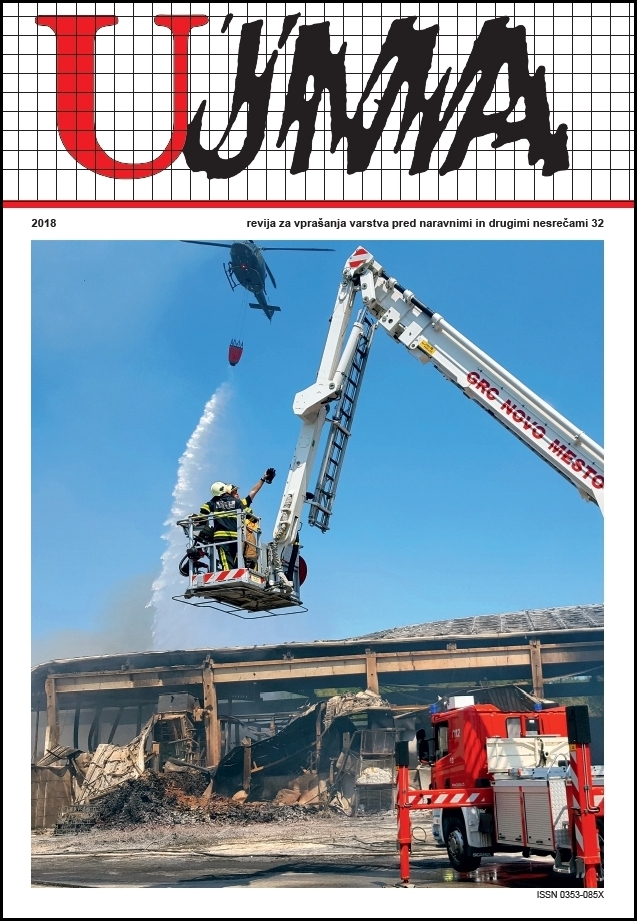MARINE AND COASTAL POLLUTION CAUSED BY OIL SPILLS
Abstract
Europe is the world’s largest importer of crude oil, which is mainly transported by sea. This has a major impact on the marine and coastal ecosystems of maritime countries, since maritime traffic constitutes an increased likelihood of disasters at sea and oil spills into the sea, whether by accident or resulting from ship operations. Accidental oil spills are the main source of marine pollution, which is placing enormous demands on the national authorities in charge of response and clean-up operations. Even though modern ship systems are technologically advanced and reliable, disasters involving oil spills are still very common. It is imperative that the European Union and maritime countries continue to monitor the situation at sea, and strive to develop appropriate preventive measures and a coordinated response, which will be crucial for mitigating the consequences of oil spills at sea.
References
Bellefontaine, N., Donner, P., Hildebrad, L. in Johansson, T., 2016. Oil Spill Intervention in the Mediterranean Sea. Springer Link. https://link.springer.com/chapter/10.1007/698_2016_36 (6. maj 2018).
Dnevnik, 2012. Reševalci pripravljeni tudi na večje ekološke nesreče v slovenskem morju. https://www.dnevnik.si/1042496306 (6. maj 2018).
EMSA, 2017. Accident Investigation Publication. http://emsa.europa.eu/accident-investigation-publications/annual-overview.html (6. maj 2018).
EMSA, 2018. About us. http://www.emsa.europa.eu/about/ (6. maj 2018).
European Commission, 2018. Response to marine pollution. European Civil Protection and Humanitarian Aid Operations. https://ec.europa.eu/echo/what/civil-protection/response-to-marine-pollution_en (6. maj 2018).
Fakulteta za pomorstvo in promet, 2017. Ocena tveganja za nesreče na morju – povzetek. Univerza v Ljubljani, Fakulteta za pomorstvo in promet.
Ferraro, G., Meyer-Roux, S. in drugi, 2009. Long term monitoring of oil spills in European seas.
Glasilo Uradni list RS 2008, 2008. 73. Uredba o ratifikaciji Sporazuma o podregionalnem načrtu ukrepov za preprečevanje večjega onesnaženja Jadranskega morja, za pripravljenost in odzivanje nanj. Uradni list RS, št. 61/2008 z dne 16. 6. 2008. https://www.uradni-list.si/glasilo-uradni-list-rs/vsebina/2008-02-0073/uredba-o-ratifikaciji-sporazuma-o-podregionalnemnacrtu-ukrepov-za-preprecevanje-vecjega-onesnazenja-jadranskega-morja-za-pripravljenost-in-odzivanje-nanj (6. maj 2018).
Greenpeace, 2006. Marine Reserves for the Mediterranean Sea. https://www.greenpeace.de/sites/www.greenpeace.de/files/Mediterranean_report_executive_summary_0.pdf (6. maj 2018).
International Journal of Remote Sensing 30 (3). https://www.researchgate.net/publication/248976088_Long_term_monitoring_of_oil_spills_in_European_seas (6. maj 2018).
Martini, N. in Patruno, R., 2005. Oil Pollution Risk Assessment and Preparednes in the East Mediterranean. http://www.itopf.com/fileadmin/data/Documents/Papers/iosc2005martini.pdf (6. maj 2018).
Perkovič, M., Harsch, R. in Ferraro, G., 2016. Oil Spills in the Adriatic Sea. Spirnger Link. https://link.springer.com/chapter/10.1007/698_2016_53 (6. maj 2018).
URSZR, 2004. Načrt zaščite in reševanja ob nesreči na morju. http://www.sos112.si/db/priloga/izpostava/p8824.pdf (6. maj 2018).
URSZR, 2014. Povzetki državnih načrtov. http://www.sos112.si/slo/page.php?src=na112.htm (6. maj 2018).
Vlada Republike Slovenije, 2011. Načrt zaščite in reševanja ob nesreči na morju. URSZR.
Vlada Republike Slovenije, 2018. Načrt zaščite in reševanja ob nesreči na morju, verzija 1.0.
World Ocean Review, 2010. Living with the oceans. A report on the state of the world’s oceans. https://worldoceanreview.com/en/wor-1/pollution/oil/2/ (6. maj 2018).
World Ocean Review, 2010. Oil pollution of marine habitats. https://worldoceanreview.com/en/wor-1/pollution/oil/ (6. maj 2018).
Downloads
Published
Issue
Section
License

This work is licensed under a Creative Commons Attribution-NonCommercial-NoDerivatives 4.0 International License.
The articles are made available to the public under Creative Commons Attribution-NonCommercial-NoDerivatives 4.0 International (CC BY-NC-ND 4.0).


